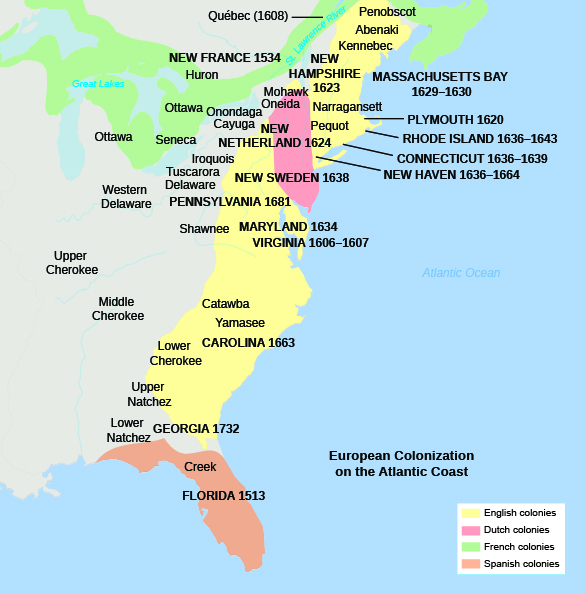| << Chapter < Page | Chapter >> Page > |
At the start of the seventeenth century, the English had not established a permanent settlement in the Americas. Over the next century, however, they outpaced their rivals. The English encouraged emigration far more than the Spanish, French, or Dutch. They established nearly a dozen colonies, sending swarms of immigrants to populate the land. England had experienced a dramatic rise in population in the sixteenth century, and the colonies appeared a welcoming place for those who faced overcrowding and grinding poverty at home. Thousands of English migrants arrived in the Chesapeake Bay colonies of Virginia and Maryland to work in the tobacco fields. Another stream, this one of pious Puritan families, sought to live as they believed scripture demanded and established the Plymouth, Massachusetts Bay, New Haven, Connecticut, and Rhode Island colonies of New England ( [link] ).

Promoters of English colonization in North America, many of whom never ventured across the Atlantic, wrote about the bounty the English would find there. These boosters of colonization hoped to turn a profit—whether by importing raw resources or providing new markets for English goods—and spread Protestantism. The English migrants who actually made the journey, however, had different goals. In Chesapeake Bay, English migrants established Virginia and Maryland with a decidedly commercial orientation. Though the early Virginians at Jamestown hoped to find gold, they and the settlers in Maryland quickly discovered that growing tobacco was the only sure means of making money. Thousands of unmarried, unemployed, and impatient young Englishmen, along with a few Englishwomen, pinned their hopes for a better life on the tobacco fields of these two colonies.
A very different group of English men and women flocked to the cold climate and rocky soil of New England, spurred by religious motives. Many of the Puritans crossing the Atlantic were people who brought families and children. Often they were following their ministers in a migration “beyond the seas,” envisioning a new English Israel where reformed Protestantism would grow and thrive, providing a model for the rest of the Christian world and a counter to what they saw as the Catholic menace. While the English in Virginia and Maryland worked on expanding their profitable tobacco fields, the English in New England built towns focused on the church, where each congregation decided what was best for itself. The Congregational Church is the result of the Puritan enterprise in America. Many historians believe the fault lines separating what later became the North and South in the United States originated in the profound differences between the Chesapeake and New England colonies.

Notification Switch
Would you like to follow the 'U.s. history' conversation and receive update notifications?